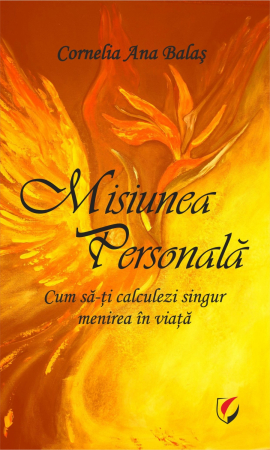ORDERS RECEIVED IN THE PERIOD 19.12.2025 - 07.01.2026 WILL BE FULFILLED STARTING ON 08.01.2026
Publisher: Editura Universitară
Author: Danut Maciuca
Edition: I
Pages: 392
Publisher year: 2024
ISBN: 978-606-28-1802-9
DOI: 10.5682/9786062818029
Product Code:
9786062818029
Do you need help?
0745 200 357
- Description
- Download (1)
- Authors
- Content
- More details
- Reviews (0)
In the second half of the 20th century, research in the field of biology benefited from the contribution of physicists and chemists which led to the emergence of molecular biology. However, these investigations did not address the wave aspect of matter at all. In this context, in 1982, Alfred Kastler hoped that: "biological research would confirm the existence of a link between coherence in physics and biological order, provided that the biologist also introduces the concept of complementarity of a wave nature into biology". Thus, col. Eng. Dănuț Măciucă, in accordance with the principle that the physico-chemical unit of the universe must correspond to a biological unit, proposes to take a first step in deciphering the mysteries of life by introducing the undulatory aspect of matter into biological research.
The author consulted a rich and significant specialized literature, on the basis of which he elaborated and argued his original ideas presented in the present volume.
This original work, remarkable in conception and approach, is of great interest both to specialists in several fields: molecular biology, physics, biophysics, chemistry, biochemistry, bioinformatics and biotechnology, as well as to pupils, students and the general public.
Acad. Octavian Popescu
The author consulted a rich and significant specialized literature, on the basis of which he elaborated and argued his original ideas presented in the present volume.
This original work, remarkable in conception and approach, is of great interest both to specialists in several fields: molecular biology, physics, biophysics, chemistry, biochemistry, bioinformatics and biotechnology, as well as to pupils, students and the general public.
Acad. Octavian Popescu
-
The total order of the Universe. The unseen face of evolution
Download
DANUT MACIUCA
Foreword / 7
Introduction / 9
1. The universe – the only reality / 13
1.1. Cosmos and microcosm / 13
1.2. The fundamental forces that shape the universe / 15
1.3. Life – fundamental variable in the study of the universe / 17
1.4. The universe - the only reality / 21
1.5. Light from ... light / 28
1.6. Known aspects of cosmological determinism in the biological sphere / 31
2. The image of the universe in the assumptions of modern physics. Connections between modern physics and biology / 36
2.1. The particle and the field in classical physics / 36
2.2. A new approach - "Connection" between the parts of the whole / 37
2.3. Self-consistency and completeness of the "bootstrap" hypothesis in the principle of "correlation between organs" / 38
2.4. Holomovement in the theory of levels of integration of the living world / 42
2.5. Wrapping, implicitness and self-consistency in the RNA genetic code / 50
3. The continuous – discrete ratio in mathematics / 67
4. Corpuscule – wave rivalry / 73
5. The genetic code explained by order relationships / 81
6. "Pit of potential" of the genetic program / 96
7. Modeling the mechanism of integral systems / 116
7.1. General theory of systems – overview / 117
7.2. The rhythm of creation and destruction / 120
7.3. Particle vibrations / 120
7.4. Dual representation of microphysical (elementary) particles / 121
7.5. Coherence of microphysical phenomena – the genesis of order / 122
7.6. Complementarity / 130
7.7. Order relations / 132
7.8. Wrapping in holographic technique / 133
7.9. The indeterminism of quantum physics / 135
7.10. Determinism confined in the principle formulated by Huygens-Fresnel / 138
7.11. Holomotion Modeling / 147
7.12. The evolution of order relations / 155
7.13. Aspects regarding the ordered essence of the whole / 161
7.14. Analysis of the "dualities" mentioned by Stephen Hawking / 170
8. The formation and evolution of the genetic program / 177
8.1. Hypothesis for the confirmation of the proposed model / 177
8.2. Winding Level N1 / 177
8.3. Winding Level N2 / 179
8.4. Winding Level N3 / 182
8.5. Levels N4 – N6 of winding / 192
8.6. Winding levels N9 – N12 / 203
9. Description of initial conditions through the network of order relations / 225
Annex. Whole Wrap Level 6 / 263
Bibliography / 389
Introduction / 9
1. The universe – the only reality / 13
1.1. Cosmos and microcosm / 13
1.2. The fundamental forces that shape the universe / 15
1.3. Life – fundamental variable in the study of the universe / 17
1.4. The universe - the only reality / 21
1.5. Light from ... light / 28
1.6. Known aspects of cosmological determinism in the biological sphere / 31
2. The image of the universe in the assumptions of modern physics. Connections between modern physics and biology / 36
2.1. The particle and the field in classical physics / 36
2.2. A new approach - "Connection" between the parts of the whole / 37
2.3. Self-consistency and completeness of the "bootstrap" hypothesis in the principle of "correlation between organs" / 38
2.4. Holomovement in the theory of levels of integration of the living world / 42
2.5. Wrapping, implicitness and self-consistency in the RNA genetic code / 50
3. The continuous – discrete ratio in mathematics / 67
4. Corpuscule – wave rivalry / 73
5. The genetic code explained by order relationships / 81
6. "Pit of potential" of the genetic program / 96
7. Modeling the mechanism of integral systems / 116
7.1. General theory of systems – overview / 117
7.2. The rhythm of creation and destruction / 120
7.3. Particle vibrations / 120
7.4. Dual representation of microphysical (elementary) particles / 121
7.5. Coherence of microphysical phenomena – the genesis of order / 122
7.6. Complementarity / 130
7.7. Order relations / 132
7.8. Wrapping in holographic technique / 133
7.9. The indeterminism of quantum physics / 135
7.10. Determinism confined in the principle formulated by Huygens-Fresnel / 138
7.11. Holomotion Modeling / 147
7.12. The evolution of order relations / 155
7.13. Aspects regarding the ordered essence of the whole / 161
7.14. Analysis of the "dualities" mentioned by Stephen Hawking / 170
8. The formation and evolution of the genetic program / 177
8.1. Hypothesis for the confirmation of the proposed model / 177
8.2. Winding Level N1 / 177
8.3. Winding Level N2 / 179
8.4. Winding Level N3 / 182
8.5. Levels N4 – N6 of winding / 192
8.6. Winding levels N9 – N12 / 203
9. Description of initial conditions through the network of order relations / 225
Annex. Whole Wrap Level 6 / 263
Bibliography / 389
In the present volume, The Total Order of the Universe, Mr. Col. Eng. Dănuț Măciucă approaches a subject that interests a wide audience. Currently, the concept of "order" is defined by its opposite, "disorder".
In thermodynamics, the energy state and sense of evolution of a system are quantities defined as "state functions". The state functions with which thermodynamics operates are: internal energy, enthalpy, entropy and Helmholtz free energy. The disorder of a thermodynamic system, at the molecular or atomic level, is characterized by the state function "entropy". The existence of entropy is one of the consequences of the second law of thermodynamics. Entropy is a "measure of disorder" and its value depends on the physical state of the system. In nature, entropy cannot decrease. Arthur Eddington (1928) states that the second law of thermodynamics is the only law of physics that has an "arrow of time". In this context, disorder as a state of a system is much more likely than order.
The appearance and evolution of the living world are closely related to the evolution of the Universe. Currently, the knowledge regarding the evolution of the universe is not comprehensive enough to be able to give an adequate answer to the questions regarding the appearance and evolution of the first forms of life on earth. Thus, the author believes that explanations are long overdue [...] at least until physics and biology solve the critical issues they face.
In the second half of the 20th century, research in the field of biology benefited from the contribution of physicists and chemists, which led to the emergence of molecular biology. However, these investigations did not address the wave aspect of matter at all. In this context, in 1982, Alfred Kastler hoped that: "biological research would confirm the existence of a link between coherence in physics and biological order, provided that the biologist also introduces the concept of complementarity of a wave nature into biology". Thus, Mr. Col. Eng. Măciucă, in accordance with the principle that the physico-chemical unit of the universe must correspond to a biological unit, aims to take a first step in deciphering the mysteries of life by introducing the undulatory aspect of matter into biological research. Of course, physics will have to solve the problem of reality specific to the microphysical domain. In this field where new things are discovered, for example, the bizarre oscillation of the muon (an elementary particle with a negative electric charge, the same as the electron, but 200 times more massive), observed in a laboratory experiment carried out in the U.S. (Fermi National Accelerator Laboratory), leads researchers to believe that perhaps it is another unknown particle or force that is missing from the way we understand the Universe.
The author consulted a rich and significant specialized literature, based on which he elaborated and argued the original ideas presented in this volume. A special influence, also mentioned by the author, was a book by the academician Solomon Marcus, The Challenge of Science (1988), which is still very relevant today. Going through this volume elaborated meticulously by Mr. col. Eng. Măciucă is an instructive experience for any reader.
This original work, remarkable for its conception and approach, is of great interest both to specialists in several fields: molecular biology, physics, biophysics, chemistry, biochemistry, bioinformatics and biotechnology, as well as to pupils, students and the general public.
Acad. Octavian Popescu
In thermodynamics, the energy state and sense of evolution of a system are quantities defined as "state functions". The state functions with which thermodynamics operates are: internal energy, enthalpy, entropy and Helmholtz free energy. The disorder of a thermodynamic system, at the molecular or atomic level, is characterized by the state function "entropy". The existence of entropy is one of the consequences of the second law of thermodynamics. Entropy is a "measure of disorder" and its value depends on the physical state of the system. In nature, entropy cannot decrease. Arthur Eddington (1928) states that the second law of thermodynamics is the only law of physics that has an "arrow of time". In this context, disorder as a state of a system is much more likely than order.
The appearance and evolution of the living world are closely related to the evolution of the Universe. Currently, the knowledge regarding the evolution of the universe is not comprehensive enough to be able to give an adequate answer to the questions regarding the appearance and evolution of the first forms of life on earth. Thus, the author believes that explanations are long overdue [...] at least until physics and biology solve the critical issues they face.
In the second half of the 20th century, research in the field of biology benefited from the contribution of physicists and chemists, which led to the emergence of molecular biology. However, these investigations did not address the wave aspect of matter at all. In this context, in 1982, Alfred Kastler hoped that: "biological research would confirm the existence of a link between coherence in physics and biological order, provided that the biologist also introduces the concept of complementarity of a wave nature into biology". Thus, Mr. Col. Eng. Măciucă, in accordance with the principle that the physico-chemical unit of the universe must correspond to a biological unit, aims to take a first step in deciphering the mysteries of life by introducing the undulatory aspect of matter into biological research. Of course, physics will have to solve the problem of reality specific to the microphysical domain. In this field where new things are discovered, for example, the bizarre oscillation of the muon (an elementary particle with a negative electric charge, the same as the electron, but 200 times more massive), observed in a laboratory experiment carried out in the U.S. (Fermi National Accelerator Laboratory), leads researchers to believe that perhaps it is another unknown particle or force that is missing from the way we understand the Universe.
The author consulted a rich and significant specialized literature, based on which he elaborated and argued the original ideas presented in this volume. A special influence, also mentioned by the author, was a book by the academician Solomon Marcus, The Challenge of Science (1988), which is still very relevant today. Going through this volume elaborated meticulously by Mr. col. Eng. Măciucă is an instructive experience for any reader.
This original work, remarkable for its conception and approach, is of great interest both to specialists in several fields: molecular biology, physics, biophysics, chemistry, biochemistry, bioinformatics and biotechnology, as well as to pupils, students and the general public.
Acad. Octavian Popescu
If you want to express your opinion about this product you can add a review.
write a review

6359.png)
![The total order of the Universe. The unseen face of evolution [0] The total order of the Universe. The unseen face of evolution [0]](https://gomagcdn.ro/domains/editurauniversitara.ro/files/product/medium/ordinea-totala-a-universului-fata-nevazuta-a-evolutiei-951443.jpg)
![The total order of the Universe. The unseen face of evolution [1] The total order of the Universe. The unseen face of evolution [1]](https://gomagcdn.ro/domains/editurauniversitara.ro/files/product/medium/ordinea-totala-a-universului-fata-nevazuta-a-evolutiei-453364.jpg)
![The total order of the Universe. The unseen face of evolution [1] The total order of the Universe. The unseen face of evolution [1]](https://gomagcdn.ro/domains/editurauniversitara.ro/files/product/large/ordinea-totala-a-universului-fata-nevazuta-a-evolutiei-951443.jpg)
![The total order of the Universe. The unseen face of evolution [2] The total order of the Universe. The unseen face of evolution [2]](https://gomagcdn.ro/domains/editurauniversitara.ro/files/product/large/ordinea-totala-a-universului-fata-nevazuta-a-evolutiei-453364.jpg)














